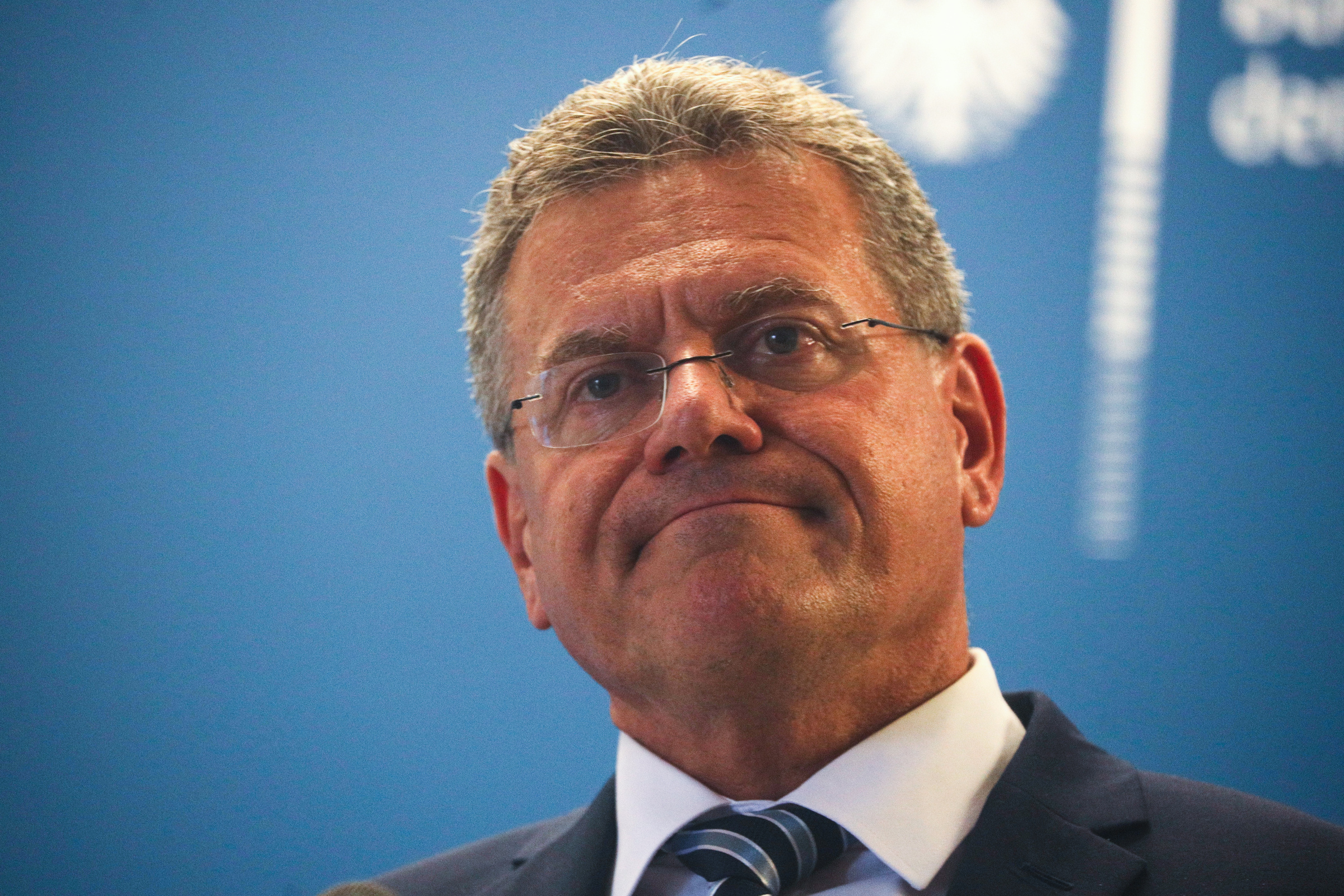Late last week, US President Donald Trump announced a letter imposing a 30% tariff on imports from the European Union (EU). This move came shortly after the US and EU negotiating delegations revealed positive developments.
Commenting on the tariff level in a meeting with ministers and officials of the 27 member states earlier this week, EU Trade Commissioner Maros Sefcovic said that a 30% tariff means that the region's goods are almost impossible to continue exporting to the US. "In reality, it is a trade ban," he said.
The US is the EU's largest trading partner, accounting for 20% of its total exports last year. Trump is unhappy with the $235 billion goods deficit with the bloc, despite the US surplus in services.
 |
EU Trade Commissioner Maros Sefcovic in a meeting on 23/6. Photo: Reuters |
EU Trade Commissioner Maros Sefcovic in a meeting on 23/6. Photo: Reuters
Economists at Barclays Bank estimate that a scenario of an average 35% tariff on EU goods – including reciprocal and sector-specific tariffs, combined with 10% retaliatory tariffs from Brussels – would reduce the eurozone's GDP by 0.7 percentage points. This equates to eroding much of the already low growth, reaching 0.7% and 0.8% for the eurozone and the EU respectively last year.
In Germany, estimates by the IW Economic Institute show that tariffs of 20-50% would cost the country's €4,300 billion economy over €200 billion between now and 2028. This threat could overturn Chancellor Friedrich Merz's plans for tax cuts and infrastructure spending.
"We will have to postpone most of our economic policy efforts because the (30%) tariffs affect everything and impact the German export sector to its roots," Merz said last weekend.
Volker Treier, President of the Association of German Chambers of Commerce and Industry, called for swift action to prevent "the collapse of transatlantic trade". "The escalating tariff conflict with the US poses a serious threat to many German companies," he said.
In a meeting in Brussels on 14/7, European ministers remained confident that they could persuade President Trump and reach an agreement before the 1/8 deadline. According to Sefcovic, "there is still prospect for negotiations" to maintain the $1,700 billion two-way trade relationship.
But the erratic shifts in Trump's attitude toward the European Union, which he sometimes calls friendly and at other times accuses of "being created just to destroy the US," makes the threat of 30% tariffs real, according to Reuters.
According to Barclays, if the 30% tariff takes effect, the European Central Bank (ECB) would have to cut its current 2% interest rate to stimulate the economy. "Inflation could be below the 2% target for an extended period, leading to monetary easing, potentially bringing rates to 1% by 3/2026," the bank's experts predict.
In the long term, the bigger question is how Europe can offset the decline in economic activity to maintain its ability to realize its ambitions, from caring for an aging population to military spending. The EU is working to diversify its exports and has reached some preliminary agreements with new partners.
However, the full completion of major agreements such as the EU-Mercosur (Brazil, Argentina, Uruguay, Paraguay, and Bolivia) is said to be delayed. "The EU does not have other markets to easily access and sell goods," said Varg Folkman, a policy analyst at the European Policy Centre.
From a different perspective, some observers believe that the confrontation with Trump is the impetus the EU needs to complete long-delayed internal reforms. The International Monetary Fund (IMF) estimates that internal barriers to the free flow of goods and services are equivalent to a 44% tax on goods and 110% on services.
Proposed reforms such as building a freer cross-border capital market have made almost no progress in over a decade. "Easier said than done. There is no consensus to go deeper. These barriers are erected by the EU member states themselves to protect their own interests," Folkman commented on the overlapping network of regulations of each member state.
The prospects for EU-US negotiations in less than three weeks remain uncertain. The bloc maintains its stance of being ready to negotiate but has prepared retaliatory measures. After the meeting on 14/7, Sefcovic said that the member states had agreed on countermeasures if trade negotiations with the US fail. Accordingly, the European Commission on the same day announced a list of US imports worth about €72 billion ($84 billion) that could be subject to tariffs.
Phien An (Reuters)












